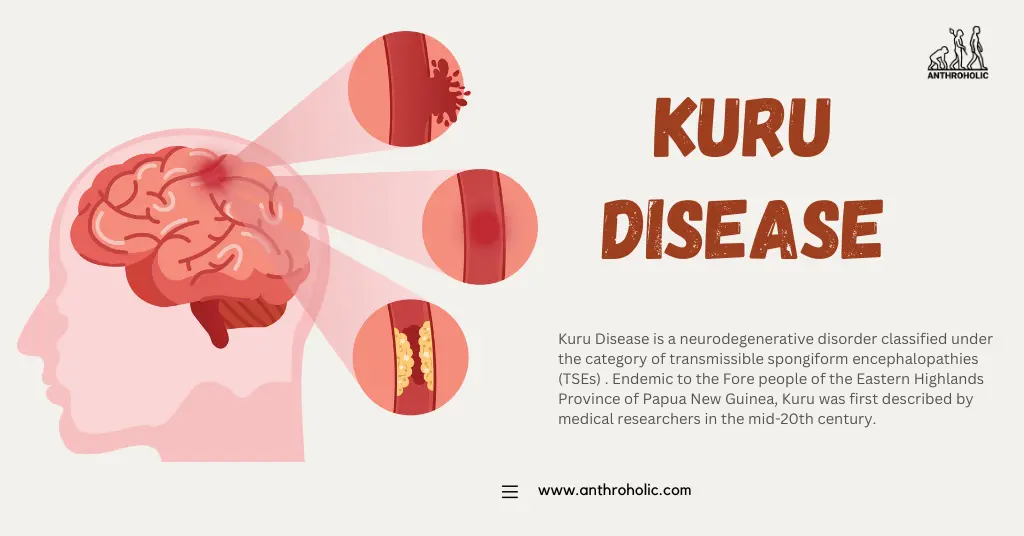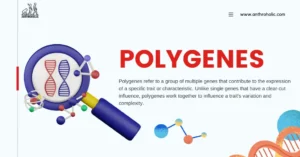AI Answer Evaluation Platform Live Now. Try Free Answer Evaluation Now
Kuru Disease
Kuru, a rare and fatal neurodegenerative disorder, once predominantly affected the Fore people in the Eastern Highlands of Papua New Guinea. This disease, which garnered significant attention in the mid-20th century, is intrinsically linked to the practice of ritualistic cannibalism. This article aims to provide a comprehensive overview of Kuru disease, delving into its history, symptoms, transmission, diagnosis, and the latest research findings.

The History and Background of Kuru
Origins and Cultural Practices
- Geographical Focus: Eastern Highlands of Papua New Guinea.
- Cultural Context: Ritualistic cannibalism among the Fore people.
- Discovery: First identified in the 1950s by Australian medical researchers.
The Decline of Kuru
- Changes in Practices: Abandonment of cannibalism led to a drastic reduction in Kuru cases.
- Current Status: Now extremely rare, with the last known case reported in the 21st century.
Understanding Kuru Disease
Symptoms and Progression
- Early Stage:
- Tremors
- Unsteady gait
- Slurred speech
- Advanced Stage:
- Severe motor dysfunction
- Inability to eat or stand
- Emotional instability
- Terminal Stage:
- Bedridden state
- Secondary infections
- Death, typically within a year of symptom onset
Transmission and Pathology
The Prion Hypothesis
- Definition: Prions are misfolded proteins that can induce normal proteins to also misfold.
- Transmission Mechanism: Ingestion of infected human brain tissue during cannibalistic rituals.
Diagnosis and Challenges
Diagnostic Techniques
- Historical Diagnosis: Primarily based on symptoms and history of exposure.
- Modern Approaches: Advanced techniques like MRI and analysis of cerebrospinal fluid.
Challenges in Diagnosis
- Lack of Specific Biomarkers: Difficulty in differentiating from other prion diseases.
- Cultural and Geographical Barriers: Limited access to advanced medical facilities in affected regions.
Latest Research and Developments
Recent Studies and Findings
- Genetic Resistance: Discovery of genetic mutations in some Fore people that confer resistance to Kuru.
- Implications for Other Prion Diseases: Insights into potential treatments for diseases like Creutzfeldt-Jakob Disease.
Ongoing Research Areas
- Vaccine Development: Efforts to create a vaccine against prion diseases.
- Understanding Prion Behavior: Deepening the understanding of how prions replicate and spread.
Table 1: Chronology of Kuru Disease Discovery
| Year | Event |
|---|---|
| 1957 | Kuru identified among the Fore people |
| 1966 | Gajdusek demonstrates the transmissibility of Kuru |
| 1968 | Gibbs and Alpers further the understanding of transmission |
| 1976 | Prions identified as the causative agent |
Conclusion
Kuru disease, a terrifying prion disease with a unique and tragic history, serves as a stark reminder of the consequences of cultural practices and the complexities of human behavior. While the cessation of endocannibalism has effectively ended the kuru epidemic, its legacy continues to echo in the scientific community. The understanding gained from kuru research has been instrumental in deciphering other prion diseases like Creutzfeldt-Jakob disease (CJD) and Bovine Spongiform Encephalopathy (BSE), contributing significantly to the field of neurodegenerative research. Furthermore, the cultural context of kuru highlights the importance of cultural sensitivity and understanding when addressing public health concerns in diverse communities. As we move forward, the story of kuru serves as a cautionary tale and a testament to the power of scientific inquiry in unraveling the mysteries of human health.



